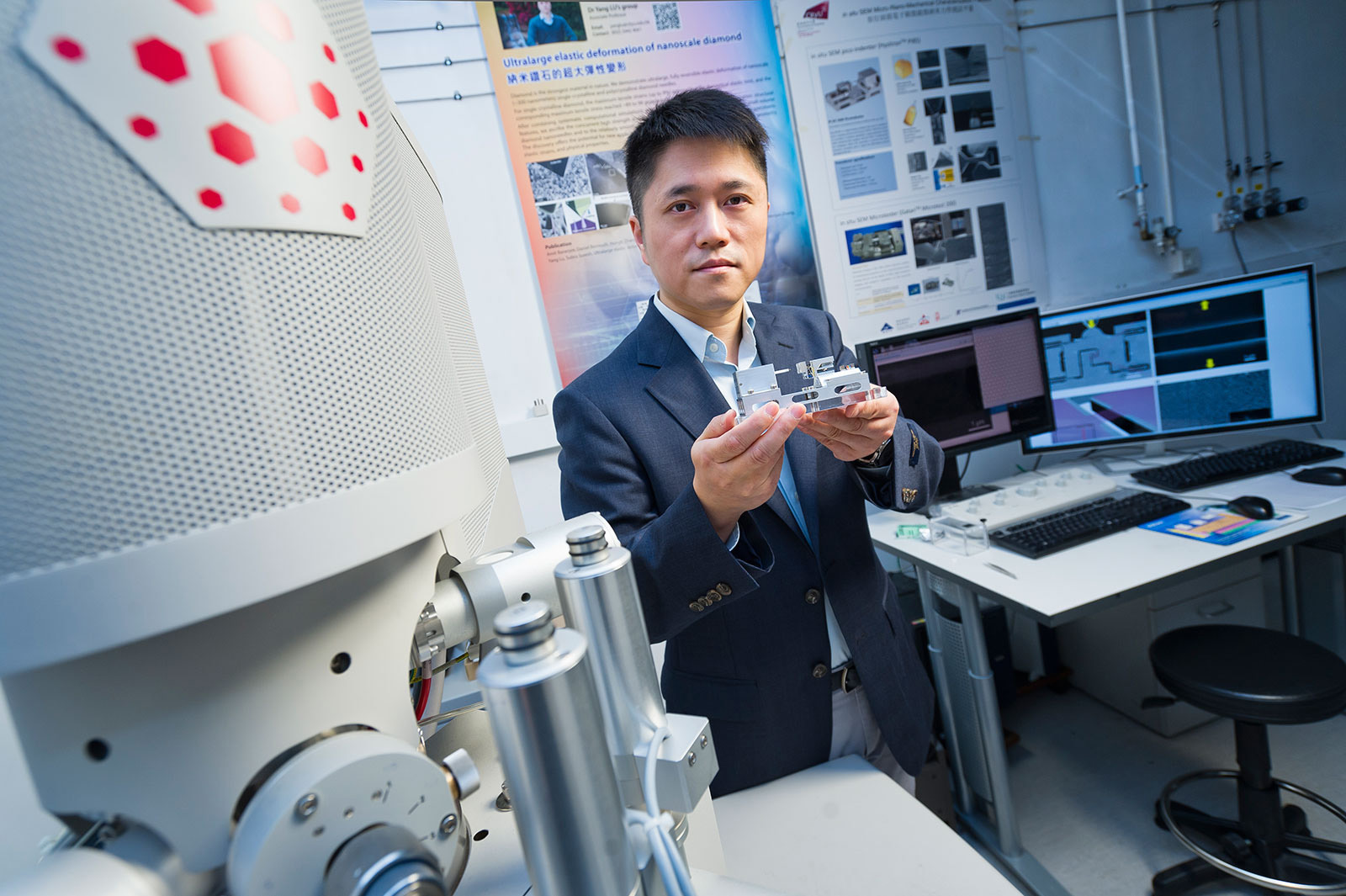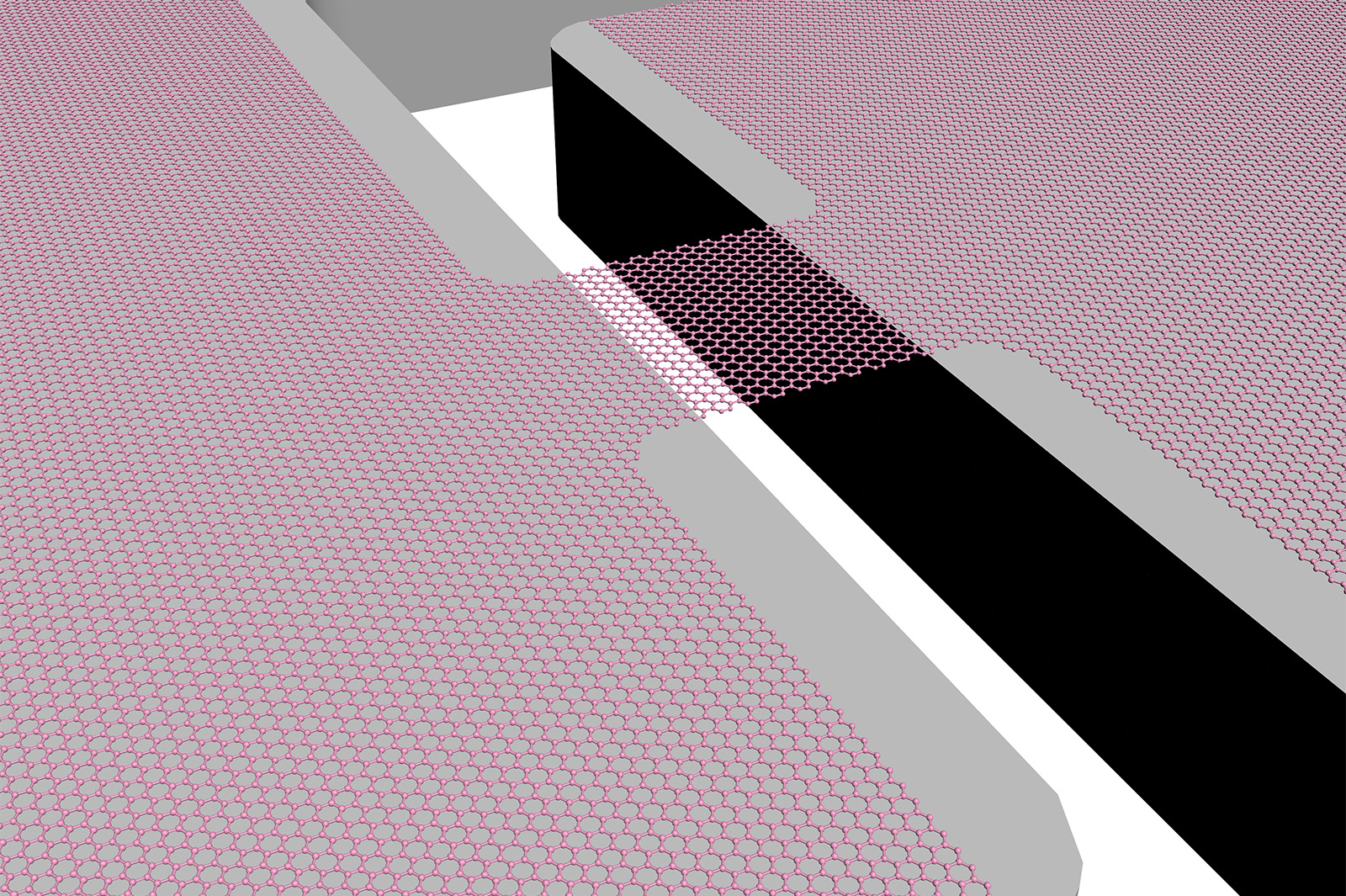Graphene’s ultimate stretchability and ‘realistic’ strength discovered

The realistic mechanical properties of monolayer graphene have been successfully studied by a new method developed by a research team led by Dr Lu Yang, Associate Professor of Department of Mechanical Engineering at City University of Hong Kong (CityU). The groundbreaking discovery will promote the application of graphene in different areas, such as the touch monitor on flexible mobile phones.
Dr Lu’s research achievement has been published in the prestigious international journal Nature Communications, titled “Elastic straining of free-standing monolayer graphene.” This paper was also highlighted in “Editors' Choice” in the 21 February 2020 issue of Science.
A two-dimensional carbon substance, graphene is the strongest material known with excellent electrical and thermal conductivity. Hence, it is deemed a "super material", ideal for many fields, for example, transistors, biosensors and batteries.
Graphene’s structure as a single layer of atoms has made it extremely difficult for scientists to test its actual mechanical properties such as elasticity and tensile strength. The studies in this area so far have covered only its ideal limits by local indentation experiments and theoretical calculations.
“No one has really stretched a large-area, free-standing monolayer graphene and tested its elastic tensile properties,” Dr Lu said.
Over the years, Dr Lu has researched the mechanical properties of various nanomaterials. His research team has successfully developed a new method for transferring large-area graphene onto his unique nanomechanical testing platform, performing in situ tensile tests in a scanning electron microscope to study changes in stretching and shaping.
“One major challenge in our study is how to transfer and lay an extremely light and thin monolayer graphene sample onto a testing platform without damage, and apply the strain evenly when stretching it,” Dr Lu said.

The experiment showed that the tensile strength of chemical vapour deposition (CVD)-grown monolayer graphene can reach 50 to 60 GPa (gigapascal), with elastic strain up to 6%, and the measured Young’s modulus (or the “elastic modulus”) is 920 GPa, which is very close to the theoretical value of ~1,000 GPa. Pascals are units of measurement for stress.
“It took us nearly four years to overcome a lot of difficulties for the experiment, but our work has revealed the realistic mechanical properties of graphene for engineering relevance,” Dr Lu said.
Its strength and stretchability make graphene a suitable material for manufacturing flexible electronic devices, such as transistors with better robustness, organic light-emitting diodes, and other mechanical components.
It can also be used for the production of composite materials and in the areas of biomedical research, aviation and national defence.
Dr Lu said he was grateful to CityU for providing top-notch facilities for his team to conduct their research, such as the Nano-Manufacturing Laboratory at the CityU Shenzhen Research Institute, the Centre for Super-Diamond and Advanced Films, and the Centre for Advanced Structural Materials.
In addition, CityU’s emphasis on interdisciplinary collaboration helped his research. “Our experiment required experts from the disciplines of mechanics, materials science, chemistry and physics to work together, and the outstanding talents in these fields can be readily found at CityU,” Dr Lu said.
Members of the research team include PhD students Cao Ke and Han Ying in the Department of Mechanical Engineering and Dr Ly Thuc-hue, Assistant Professor in the Department of Chemistry, at CityU, as well as experts from Tsinghua University and Xidian University.
